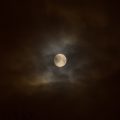Introduction to Divination in British Culture
Divination has woven itself into the very fabric of British history, playing a subtle yet persistent role in the nations cultural tapestry. From the shadowy corners of medieval castles to the bustling Victorian parlours, the British fascination with glimpsing the future or uncovering hidden truths has endured for centuries. While popular imagination often conjures images of crystal balls and fortune tellers, divination in the UK encompasses a far wider array of tools and traditions. Practices such as tea leaf reading, palmistry, tarot cards, and runes have all found their place among Britain’s mystical customs. These methods not only reflect the countrys rich folklore but also its pragmatic approach to the unknown—where superstition intertwines with scepticism, and ritual meets reason. This enduring interest in divination speaks to a uniquely British blend of curiosity, tradition, and an understated openness to the mysterious. As we delve deeper into this subject, it becomes clear that understanding the cultural significance of these practices is essential before comparing the crystal ball to its divinatory counterparts.
2. Crystal Balls: Iconography and British Usage
Crystal balls have long occupied a significant place in the British imagination, both as mystical artefacts and as cultural symbols. Their origins are often traced back to the Roman Empire, but it is in Britain that they developed a distinct character shaped by local folklore, superstitions, and evolving societal attitudes. In the Middle Ages, soothsayers and “wise women” were reputed to use crystal spheres for scrying—a practice involving gazing into the ball to see visions of the past, present, or future. This tradition persisted through the centuries and became entwined with legends such as Merlin’s prophecies in Arthurian tales.
Iconography in Local Folklore
The crystal ball’s image is deeply embedded in British storytelling. From village fairs where Romani fortune-tellers would set up stalls, to gothic literature featuring enigmatic seers, the motif recurs with remarkable frequency. The object itself has come to symbolise both mystery and revelation—often depicted on book covers, pub signs, and even as props in pantomimes or seasonal markets. Its representation extends beyond simple ornamentation; it encapsulates themes of fate and the human desire to glimpse what lies ahead.
British Media and Modern Interpretations
In popular media, particularly British television and film, crystal balls are sometimes portrayed with a tongue-in-cheek sensibility reflective of local humour. Characters like Professor Trelawney from the Harry Potter series parody the earnestness of traditional divination while still paying homage to its roots. At the same time, shows such as “Most Haunted” or documentaries about English spiritualism treat crystal balls as legitimate tools within broader explorations of the supernatural.
Common Associations in British Culture
| Context | Crystal Ball Symbolism |
|---|---|
| Folklore & Legends | Prophecy, fate, mystical insight |
| Pubs & Markets | Nostalgia, entertainment, tradition |
| Popular Media | Humour, parody, respectful nods to history |
Summary of Unique British Interpretations
To sum up, while crystal balls share universal connections to divination across cultures, their use and iconography in Britain have been uniquely influenced by a blend of mythic storytelling, scepticism tempered with curiosity, and a love for both history and parody. Whether employed sincerely or satirically, crystal balls remain an enduring element within the patchwork of British esoteric practice and popular culture.
![]()
3. Tarot Cards, Tea Leaves, and Other British Favourites
While crystal balls certainly hold a captivating place in the world of fortune-telling, many Britons have historically turned to other forms of divination that feel distinctly local and familiar. Among the most popular alternatives are tarot card readings, tea leaf reading (tasseography), and palmistry—each with its own unique British flavour and cultural resonance.
Tarot Reading: A Modern British Staple
Tarot cards have seen a remarkable surge in popularity across Britain, especially within the last century. Although the origins of tarot lie in continental Europe, today’s British tarot readers often blend traditional symbolism with contemporary interpretations. Many view tarot not only as a predictive tool but also as a means for personal reflection, self-discovery, and even social connection at gatherings. The image of someone laying out the cards on an old wooden table in a cosy London flat is now just as much a part of British culture as afternoon tea itself.
Tea Leaf Reading: The Quintessentially British Art
If any form of divination could be called “quintessentially British,” it would surely be tea leaf reading, or tasseography. Born from the nation’s love affair with tea, this practice involves interpreting patterns left by tea leaves at the bottom of a cup. It became especially widespread during the Victorian era when parlour games and mystical pursuits were fashionable among all classes. Even today, some tearooms across the UK offer tasseography sessions, blending tradition with a touch of theatricality that appeals to both locals and tourists alike.
Palmistry: Lines Across Generations
Palmistry, or chiromancy, has long been practised at British fairs, seaside piers, and urban markets. The classic image of a fortune-teller reading palms beneath striped tents persists in popular imagination. This hands-on approach allows for a direct connection between reader and seeker, making it both accessible and personable. Palmistry’s enduring presence highlights Britain’s appreciation for rituals that combine mystery with human contact.
Other Local Divination Traditions
Beyond these well-known favourites, Britain is home to other lesser-known yet culturally significant forms of divination—ranging from rune casting (with roots in Anglo-Saxon history) to scrying using bowls of water or mirrors. Each reflects the diversity and creativity inherent in British approaches to seeking insight about life’s mysteries.
A Rich Tapestry of Traditions
Altogether, these tools demonstrate that while crystal balls may symbolise mysticism in popular media, everyday Britons have always found meaning in a wide array of divinatory practices. Whether sharing fortunes over a cup of tea or seeking guidance from a deck of cards, these traditions remain woven into the fabric of British cultural life.
4. Comparing Traditions: Crystal Balls vs. British Practices
When analysing the place of crystal balls within the wider British context, it is essential to compare their prominence, symbolism, and level of social acceptance with other traditional divination tools such as tarot cards, tea leaves (tasseography), and runes. While crystal balls are often associated with the theatrical image of a fortune teller—complete with velvet drapes and mystique—their actual prevalence in everyday British divinatory practice is nuanced.
Prominence in British Culture
| Divination Tool | Prominence in Britain | Common Settings |
|---|---|---|
| Crystal Ball | Moderate; iconic but less commonly used day-to-day | Psychic fairs, staged readings, media depictions |
| Tarot Cards | High; widely practised and accessible | Private readings, online communities, bookshops |
| Tea Leaves (Tasseography) | Culturally significant; uniquely British roots | Home gatherings, afternoon teas, folklore events |
| Runes | Niche but growing interest; linked to Norse and Celtic heritage | Pagan circles, historical reenactments, craft markets |
Symbolism and Cultural Associations
The symbolism attached to each tool also reflects broader cultural narratives. Crystal balls are often perceived as mystical objects that bridge the gap between reality and the unknown, whereas tea leaf reading taps directly into British domestic traditions—turning a cup of tea into an instrument for introspection. Tarot cards, with their rich iconography, have become synonymous with personal guidance and psychological exploration. Runes evoke ancestral ties and a sense of reconnecting with lost heritage.
Social Acceptance and Stigma
The social acceptance of these practices varies considerably across British society. Tea leaf reading is often seen as quaint or nostalgic rather than serious divination—sometimes dismissed as harmless fun at family gatherings. Tarot enjoys broader mainstream acceptance due to its psychological framing and accessibility. Crystal balls, while visually striking and instantly recognisable thanks to popular media, can attract scepticism or be regarded as more theatrical than practical. Runes tend to appeal most within alternative spiritual communities but are not broadly stigmatised.
Summary Table: Social Acceptance in Britain
| Tool | Main Symbolism | Level of Social Acceptance* |
|---|---|---|
| Crystal Ball | Mystery, foresight, spectacle | Moderate; some scepticism due to media portrayal |
| Tarot Cards | Introspection, fate, guidance | High; mainstream and alternative circles alike |
| Tea Leaves (Tasseography) | Tradition, luck, storytelling | High; seen as culturally charming or nostalgic |
| Runes | Ancestry, wisdom, nature cycles | Niche; respected among enthusiasts but less known generally |
*Based on qualitative observations from contemporary British society.
5. Contemporary British Views on Divination
When considering the present-day British attitude towards divination, a fascinating blend of scepticism and curiosity emerges. Crystal balls, with their long-standing association with Romani fortune tellers and Victorian parlour mystics, remain the most iconic image in the British imagination. However, modern Britons approach them with a degree of playful irony as much as genuine belief. Today, crystal balls are as likely to be seen at local fairs or in quirky high street shops as they are in serious esoteric circles.
Other divination tools—tarot cards, runes, pendulums—have carved out their own niches within British culture. The rise of holistic wellness movements and mindfulness practices has led to a gentle resurgence in interest for these methods, especially among younger generations seeking alternative forms of self-reflection. Tarot readings, for example, are often approached as a blend of entertainment and introspection rather than outright prophecy.
The British press and popular media tend to treat divination with a wry sense of humour. Television programmes might feature fortune tellers during seasonal events like Halloween or on chat shows, often highlighting the theatricality and eccentricity rather than any spiritual significance. Scepticism remains strong: surveys regularly show that only a small fraction of Britons claim to believe in supernatural powers behind divinatory practices. Yet there is also an undercurrent of fascination—an acknowledgement that, even if not taken literally, these tools offer comfort, community, and a touch of mystery in an otherwise rational world.
Importantly, many contemporary practitioners in Britain frame their use of crystal balls or tarot cards as a means for personal insight rather than predicting fate. This pragmatic approach fits well with the wider British tradition of balancing open-mindedness with critical thinking. Whether as conversation starters at parties or as part of deeper spiritual journeys, divination tools continue to play a modest yet persistent role in the cultural landscape.
6. Conclusion: The Future of Divination in Britain
Reflecting on the evolving role of crystal balls and alternative divination tools, it is clear that the landscape of British spiritual practice continues to shift in response to both tradition and modernity. While the crystal ball remains an iconic symbol, often conjuring images of Victorian parlours and travelling fairs, contemporary Britain sees a broadening acceptance and integration of diverse methods—from tarot cards to runes, pendulums to tea leaves. This diversity mirrors the increasingly multicultural fabric of British society, where traditional folk customs sit comfortably alongside global influences. Looking forward, the future of divination in Britain appears dynamic. As younger generations embrace mindfulness, wellness, and self-exploration, these tools are often reframed less as mystical artefacts and more as aids for personal reflection and insight. Whether found at high street metaphysical shops or discussed online in lively forums, both crystal balls and their counterparts continue to find relevance—sometimes as sources of entertainment, other times as meaningful rituals in daily life. Ultimately, it is this adaptability, rooted in both heritage and innovation, that ensures divination’s ongoing presence within British culture.


